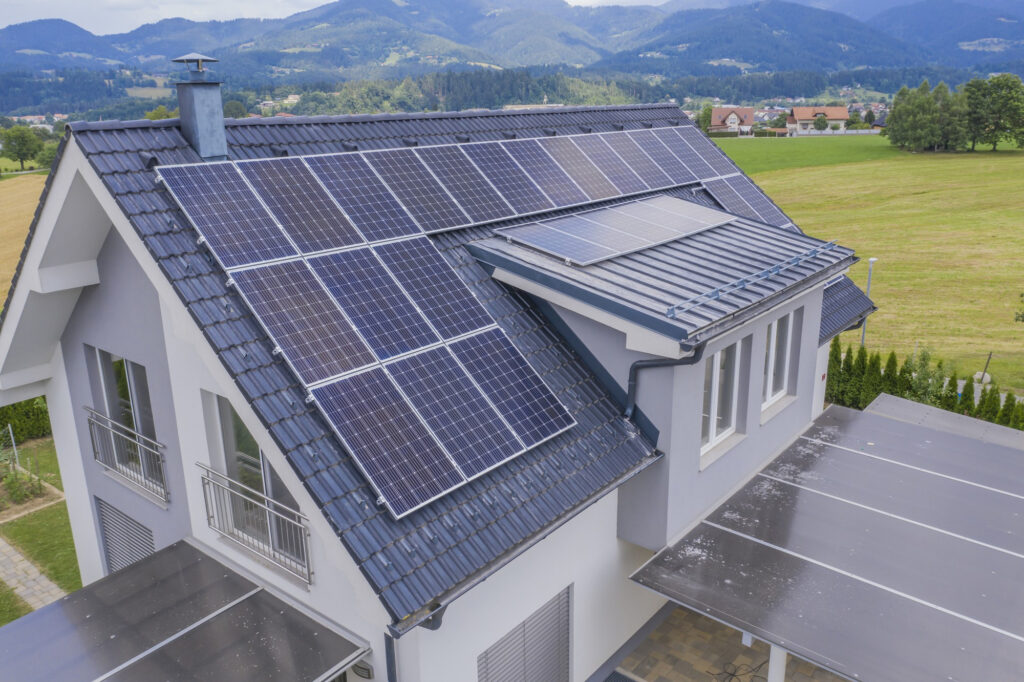
Charge your electric car with your own solar power: This is how it works!
PV surplus charging with a smart wallbox explained simply
Do you already own an electric vehicle and a PV system and want to “refuel” your car with solar power from the roof in the future? In the following article, we explain what PV surplus charging is, how it works and what benefits it brings you.
What is a PV surplus store?
With surplus charging, the PV system and charging station are coupled together; PV generation and the charging process are synchronized. The self-generated solar power that is not used in the house is then used to charge the electric car instead of being fed into the power grid.
You can often choose flexibly between predefined charging strategies. With “pure” PV charging, for example, the charging process only starts when sufficient excess PV power is available (minimum charging power = 1.4 kW). During the charging process, the charging power then continuously adapts to the available surplus.
And what happens if a cloud passes and there is no longer enough PV power available? Depending on the charging strategy, the charging process then pauses briefly and restarts automatically as soon as the sun is back, or it is charged with electricity from the grid.
What are the advantages of the surplus store?
Charging your electric car with your own solar power offers you as a user many advantages:
Independence / self-sufficiency
- Charging electric cars with surplus PV offers independence from electricity providers, price fluctuations and public charging infrastructure.
- Electricity is becoming more and more expensive, solar power remains consistently cheap. Electricity from your own solar system costs only a fraction of electricity from the public grid. In addition, grid fees, taxes and other charges are eliminated. Self-consumption optimization
- If more electricity is consumed from the PV system itself instead of being fed into the grid, the investment in a solar system pays off more quickly.
Sustainability
- Solar power is green electricity that causes very low CO2 emissions. The "consumption" of the electricity on site also eliminates transport losses, which also has a positive effect on the climate balance. The combination of e-mobility and photovoltaics is therefore not only economically interesting, but also with a view to sustainable mobility.
How can I charge my electric car at home with solar power?
Basically, you first need a photovoltaic system, a charging station (wallbox) and optionally a battery storage system and an energy management system. Here it is important to know that solar power can only be used at the moment of generation without battery storage. So if you charge your car mainly at night, a storage system definitely makes sense. However, the purchase of a PV storage system is not a mandatory prerequisite for surplus charging. For the PV surplus utilization, it is essential that the current feed-in or purchase power at the electricity meter of the building is known and can be transferred to an energy management system. There are several ways to determine the power on the electricity meter:
- Optical interface on the electricity meter (e.g. poweropti from powerfox)
- Electricity meter with internet interface
- Current sensors (installed in the meter cabinet)
- Smart meters
The energy manager monitors whether there is a surplus in electricity production in the PV system and then forwards it to the wallbox.
Conclusion: Charging your electric car with surplus PV electricity doesn't have to be complicated! All you need is a way to read out your current flow and transmit it to an energy management system and an intelligent wallbox that can be controlled via this system.
PV surplus charging with the PANTABOX
The necessary interfaces, such as Modbus or OCPP, for coupling electric vehicles and PV systems, the PANTABOX enables connection to inverters, smart meters and home energy management systems (HEMS).